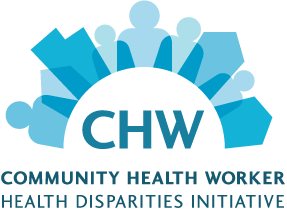2.3 Adjust Materials and Add New Ideas

In this Section
- 2.1 Recruit
- 2.2 Keep People Coming
- 2.3 Adjust Materials and Add New Ideas
- 2.4 Handle Barriers
How will you use our materials to meet your local needs?
Toolkit Tip
Adjust materials and add new ideas when you know doing so will meet the needs of everyone involved.
If you have started your heart health program, you probably have a good idea what is and is not working. You have had a chance to get to know the people in your program and can see what they like and do not like, what they already know, and what they need to learn. When you are at this stage, you may need to adjust what you are teaching to best meet their needs. No problem. Since our materials are designed to be flexible, you can easily adjust them or add new ideas.
For details and examples, visit the following:
Adjust Our Heart Health Materials
Toolkit Tip
When possible, use the 12-session format. It covers 10 heart health topics, includes a review and graduation, and teaches community health workers how to evaluate their program.
You may realize after you start your program that you need to spend more time or less on a certain heart health topic than you had originally planned. Maybe something comes up and you are forced to cancel a session, which means that you have to combine a few topics for your next session. There are many reasons you may need to adjust our heart health materials to match your needs. We have made this easy to do by designing each of our sessions to work together or apart.
The most common formats for teaching with our materials are to
- Use all 12 sessions as a package,
- Use certain sessions,
- Use parts of sessions, and
- Condense sessions.
To explore each of these formats and decide how you would like to adjust your program, visit Choose NHLBI Materials and learn how to adjust our 12-session format.
Examples from the Field
The Ohkay Owingeh Pueblo in New Mexico adjusted the materials to meet the needs of the community.
“From Honoring the Gift of Heart Health, we combined sessions 4 (high blood pressure) and 5 (cholesterol) and invited a registered dietitian to teach them. We also combined sessions 3 (physical activity) and 6 (healthy weight) because these two topics go hand-in-hand for weight loss,” says Diane Phillips, a Program Dietitian previously with the Pueblo.
Add New Ideas That Work with Our Materials
Toolkit Tip
There are many creative ways to add to our heart health materials. Use the ideas on the handout Creative Ideas for Your Heart Health Program  (PDF, 428 KB) to get your creative juices flowing.
(PDF, 428 KB) to get your creative juices flowing.
There are many ways to add new ideas to our materials. You can come up with extra activities, add examples that relate to local customs and traditions, invite guest speakers, make group videos in your sessions, and more. Once you find out which heart health topics the people in your program could use extra help with or time on, decide which new things to add. You will know what to add when you find out which heart health topics the people in your program like and want to learn more about and how they prefer to learn. Once you have figured this out, visit Think About Ways to Add to What You Are Already Doing for tips on adding your new ideas.
Examples from the Field
Two great ways that organizations added new ideas:
- “From Honoring the Gift of Heart Health, we invited participants to bring family members to participate in sessions 7 (diabetes) and 8 (healthy eating),” says Diane Phillips, a Program Dietitian previously with the Ohkay Owingeh Pueblo in New Mexico.
- “For the session on exercise, I added in other ways that people can exercise, like things they can do when sitting in a chair and other exercises that didn’t require them to go outside. This is because in some places it’s not safe for people to go outside at a certain time of night,” says Tia Newman, Branch and Development Specialist, Big Bend Area Health Education Center in Florida.








